The Louvre and Orsay Museums are the cards of French art, and Henri Loyrette, who has served as curator in the two institutions, can be said to have topped the position of museum director in France: He served as curator of the Orsay Museum from 1994 to 2001, and then became the chairman and curator of the Louvre Museum, and in 2013 when he decided not to seek re-election for the fifth term of the Louvre curator, the French cultural community Some up and down are not suitable.
As a member of the French Academy of Fine Arts and a 19th-century historical research expert, Loyette has been a government consultant and president of a cultural undertakings association since 2013 and is still active in the museum sector. In April 2017 he came to Beijing and planned an exhibition in the Forbidden City. It is not a cultural exhibition in the general sense, but a French jewelry exhibition. From the Louvre in Paris, the Napoleon I Museum in Fontainebleau, to the Victoria and Albert Museum in London, Loyette borrowed more than 300 pieces of jewellery from Chaumet, a French jewellery maker, to the Forbidden City. “The Shangzhi is exhibited by Qionghua – a treasure art exhibition that began in the eighteenth centuryâ€.
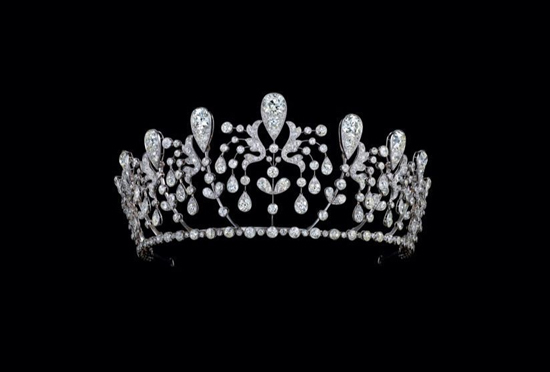
"The Golden Bell Flower" crown, also known as the "Bourbon-Parma" crown (1919)
The most famous one of the exhibits is the first time that Napoleon I, who came out of France, "the sword of coronation." The gold hilt is inlaid with emeralds and a large number of diamonds. The sword was custom-made by the founder of the French Republic, Napoleon Bonaparte, to the founder of Shangmei Paris, Marley Ai Nie. In order to prepare his own emperor coronation ceremony, Napoleon’s request for the coronation ceremony must use the French crown jewels, especially the “Regent King†diamond, which was mined in the Golkonda mine in India in 1698 and weighed 140 carats. French crown Louis XV and Louis XVI crowned the crown. Nirvana inlaid the diamond on the hilt of Napoleon's sword, and the sword was also inlaid with 42 jewels also from the French national treasury. Through the hand of Nicholas, Napoleon hopes to give this sword a deeper political significance, in order to inherit the former imperial system and to be more justifiably in power. On December 2, 1804, Napoleon wore the sword that symbolized the imperial power and appeared at the coronation of the emperor at Notre Dame.
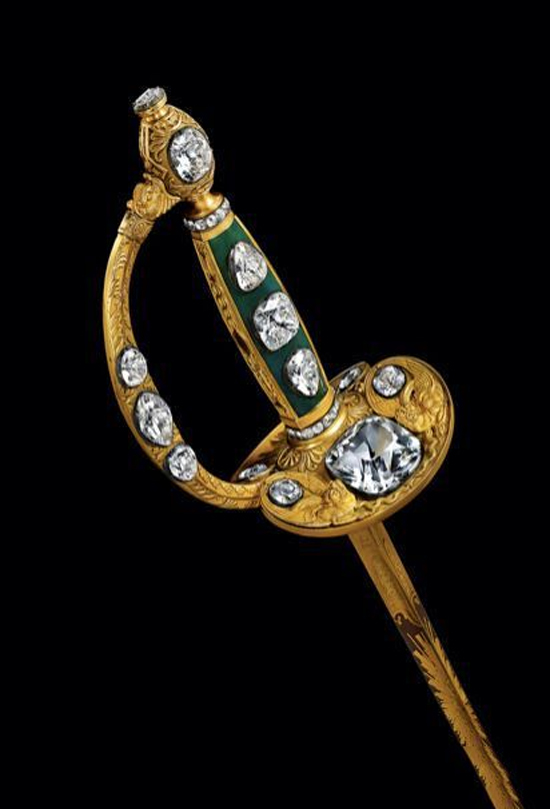
Napoleon I "The Sword of Coronation" (1804)
Nicholas was a master in the old days of the French imperial system, and went to Versailles to play for the then Queen Marie Antoinette. In 1802, Napoleon appointed him as a royal jeweler and commissioned him to produce a series of imperial symbols to be used in the 1804 coronation ceremony. In the exhibition hall of the Forbidden City, the portrait of Napoleon painted by the famous 19th-century painter François Gérard was placed behind the "Sword of Coronation". Napoleon in the painting was dressed in a robes and all the symbols of the imperial power were at a glance. : Thrones, Laurels, Medal of Honor of the Legion of Honor, Hand of the Hand of Justice, Emperor's Scepter and the Sword of the Coronation, all of which were done by Nirvana. Behind the glamour of jewelry, people see power.
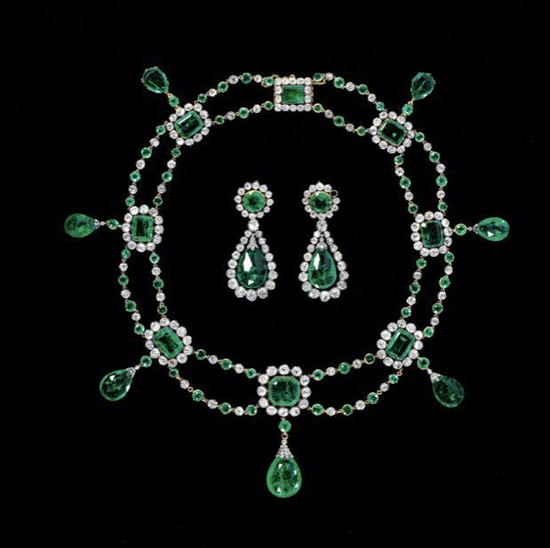
Duchess and Earrings of Bard (1806, changed in 1820)
Not only is Napoleon himself obsessed with the symbolic power of jewellery, but his queen Josephine also has a special liking for jewelry. In the Forbidden City exhibition hall, next to the "Sword of Coronation" are several sets of necklaces and earring jewelry of Josephine. Whether it is pearls or diamonds, malachite, it shows the skillful mosaic technique of Niet and Son.
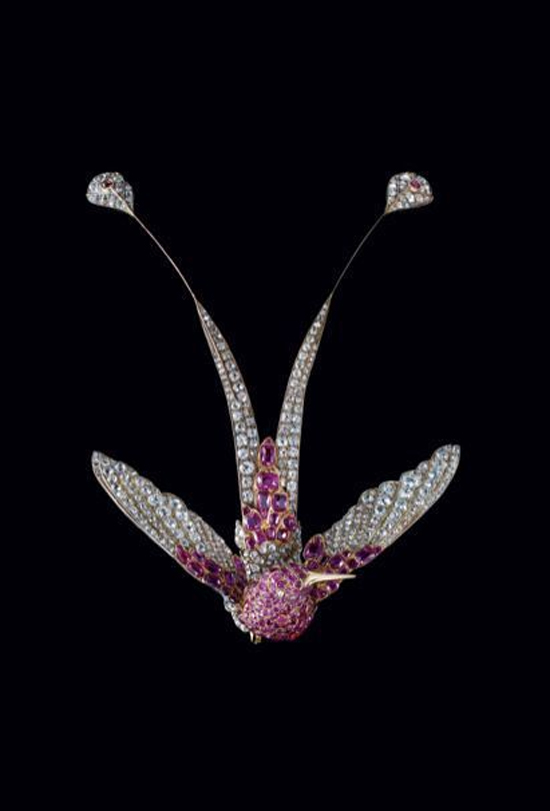
"Hummingbird" Egret Feathered Crown (circa 1880)
Later history was well known, because Josephine had never been born after being married to Napoleon, and Napoleon needed a heir to the throne to continue the great cause of the empire. To this end, Napoleon divorced Josephine and married the Austrian royal family. Grand Master Louise. The new empress will receive a royal gift every time they hold a grand ceremony, each of which comes from Shangmei Paris. At that time, neoclassicalism prevailed. We can see that these complete sets of jewelry, including hair accessories, necklaces and earrings, are more magnificent on the basis of classical style. All kinds of rare and precious stones and embossed stones, natural hard stones and pearls. They are all blended in jewelry.
In addition to the jewellery that is worn, another very special form of jewellery is also the main part of the exhibition. It was during the First Empire of France that Nirvana made the "Morning Spike" crown for Queen Mary Louise to revive this ancient Greek and Roman art form. This gold-and-silver wheat earring is made up of 9 wheat ears and is set with an old cut diamond weighing 66 carats. The heavy diamond crown needs a light design and uses as little precious metal as possible to support the diamond. The image of the wheat swaying in the wind.
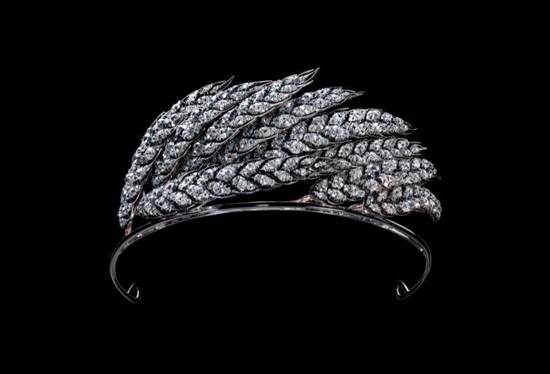
"Misui" crown (about 1811)
These are the eras when the French jewellery art was born, and the history of jewels is closely linked to the royal family and the privileged class. It is also such an environment and tradition that jewellery art has experienced revolutions in the arts and crafts and social and political changes, and has developed an art form with French characteristics. From neoclassicalism to romanticism, new art, and decorative arts, jewellery art gradually bids farewell to the exclusive identity of the former royal family and enters the context of arts and crafts.
House Hold Products,Needle Felt Blanket,Needle Polyester Blanket,Disposable Travel Blanket
Zhejiang Gleef Felt Industry CO.,LTD , https://www.gleeffelt.com